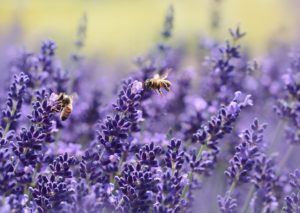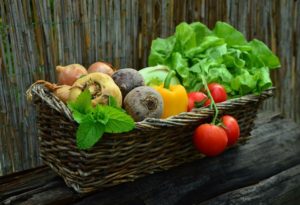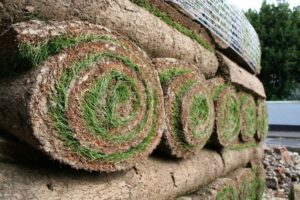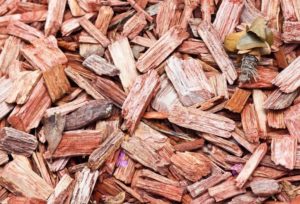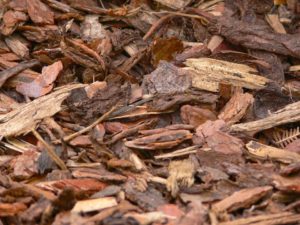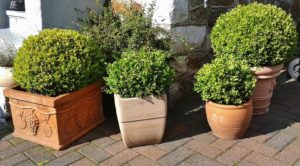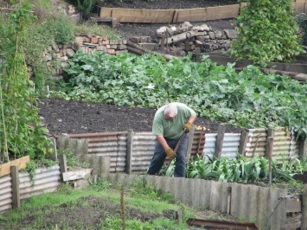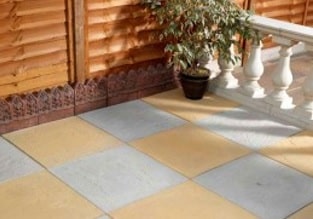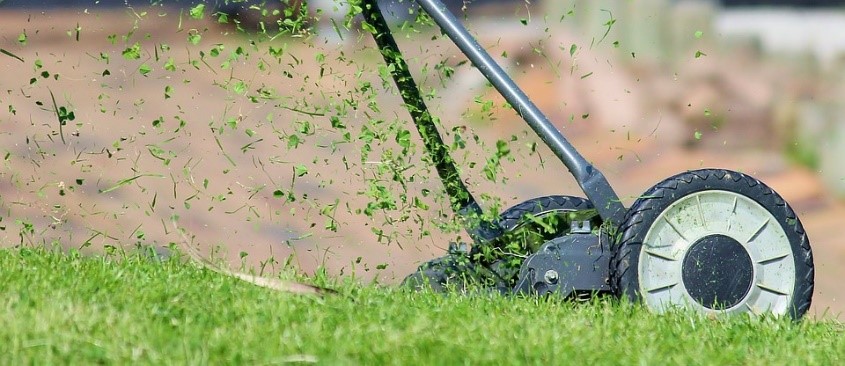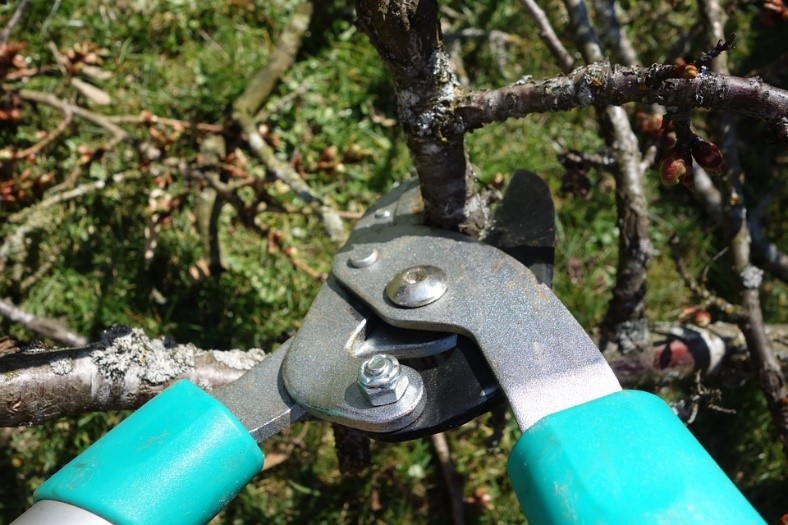Key Gardening Trends for 2019
If you want to give your garden a new look for the months ahead, then now is the time to put your plans into action. At Madingley Mulch, as suppliers of garden mulch and many other products based on the outskirts of Cambridge, we keep a close eye on changes in gardening. Here we look at five key trends for 2019.
Climate Change Gardening
A report by the Royal Horticultural Society says the UK is likely to experience more extreme weather conditions in the years ahead, with wetter winters and drier summers. This means the onus will be on gardeners to grow plants which are suitable for the soil and to retain as much moisture as possible, by installing devices such as water butts or underground tanks. Laying down mulch on your flower beds will also aid water retention and suppress weeds.
Fruit from warmer climes should do well in the new conditions, so expect to see more apricots, nectarines, figs and grapevines planted in gardens this year. A wider range of palm trees and plants like bougainvillea are also likely to thrive.
Popular Plants
The RHS says ferns, dahlias and heathers are all likely to feature heavily in garden designs this year. Ferns are believed to have stress-relieving qualities and there are plenty of varieties to choose from. Heathers are an eco-friendly option, as they encourage bees and other pollinators, whose numbers have been in decline for several years.
Dahlias have been enjoying a resurgence in popularity in recent years, and this is set to continue in 2019. They will bring vibrant pockets of colour to your flower beds, and they can also be planted in pots or patios.
Bolder Landscaping
The gardens of 2019 are likely to feature plenty of paving slabs and footpaths – but, rather than, neat, geometric patterns, designers will be using large, irregular shapes to provide a more distinctive look. Gabion walls, which use stone in a similarly unstructured way, continue this trend – they can be combined with plants to create a stylish rockery or a raised bed.
Log walls are another feature which is set to make a comeback this year. As well as acting as a boundary or screen, they can also provide a home for many different types of insects. At Madingley Mulch, we supply log rolls and railway sleepers to help in the most unusual of garden designs.
Wild Meadows
The low-maintenance aspect of wild meadows has proved popular with many garden owners in recent years, and the good news is that this is likely to continue in the months ahead. Growing lots of herbaceous perennials, shrubs and grasses, often in a small or confined space, has the added advantage of encouraging the garden’s eco-system, as it could provide a home for insects, birds and other forms of wildlife.
Garden Mulch Suppliers Madingley Mulch
Whatever you decide to grow in your garden over the year, garden mulch suppliers Madingley Mulch can help – whether you live close to our home base near Cambridge, or further afield. Our range of mulches will protect your plants from from heat and frost, as well as reducing the need for watering and weeding.
And our exclusive product Denise’s Delight, which combines all the benefits of compost and soil conditioners, a mixture of horse manure, Black Fen soil, humus and other plant nutrients, will encourage a wide variety of plants to flourish in your soil, whether you live in Bedfordshire, Cambridgeshire, Suffolk, Hertfordshire or Essex.
We also supply a wide range of outdoor and gardening products, and our staff can provide plenty of help and advice if you want to keep up with all the latest trends. Follow the link above to see our current range.
And don’t worry if you have a bulky order, because we offer a regular delivery service to towns and villages in the region, including Newmarket, Huntingdon, Cambourne and Saffron Walden. Orders are delivered free to all addresses which are under 15 miles of our base on the edge of Cambridge, while a standard £20 charge applies to all deliveries within 24.5 miles. We can also deliver to addresses further afield.
Quick & Easy Winter Garden Maintenance
Winter isn’t a great time for gardening as the dark evenings mean gardening after work is nearly impossible, the soil is cold and the majority of the plants are not flowering or have lost their leaves.
Winter is, however, a fantastic time to take stock of your garden, have a tidy up and plan for the warmer months ahead. Here, Madingley Mulch, supplier of compost, soil conditioners, cheap garden stones and high-quality fence panels to customers in Cambridge, Suffolk, Norfolk and Essex, provides a simple guide on winter garden maintenance.
Tidy Your Tools
When you’re not using them is the best time to fix your tools. Sharpen your secateurs, tighten loose spade handles, brush the dirt and mud off your tools and get rid of any rust. Not only do you become a far more efficient gardener when your tools are sharp and clean, but applying a cleaner cut when pruning a plant means it’s less likely to succumb to disease.
Plan The Year Ahead
Write a list of your gardening successes and failures and think about how it can be improved this time next year.
Order new seeds and spend some time planning and drawing out any adventurous or new landscaping projects with potential dates, colour schemes and costs. You can even create a mood-board by cutting out photos from magazines – alternatively, you can create a mood-board online with a website such as Pinterest.
Look After The Wildlife
A Freezing cold winter can be a tough time for local wildlife – and for those animals who haven’t migrated to warmer climes until spring, these months can be a struggle for animals of all sizes.
Birds love seeds, nuts and fat balls left out for them on dishes or in bird feeders and will keep returning to your garden again and again. If leaving water out for birds, remember to refresh the water regularly and ensure it hasn’t frozen over.
Try to keep a corner of your garden untidy. Hedgehog populations are steadily declining and with an undisturbed pile of logs, sticks and leaves, a hedgehog can make a great home for itself over the winter.
Winter Pruning
Fruit trees lie dormant, so it’s safe to prune them over the winter. Spend some time removing dead or damaged branches and look for where branches cross over and rub each other. Eliminate this problem by removing the weaker of the two.
It is best to prune on a dry, mild day and cut any branches at the node (the point at which a twig or branch is attached to another).
Madingley Mulch provides a huge range of high-quality garden supplies, including cheap garden stones, soil conditioners, compost, mulch and fence panels to our customers in Cambridge, Suffolk, Norfolk and Essex. Please get in touch today on 01954 212144 or shop@mulch.co.uk to discuss your gardening requirements.
Easily Create an Eco-Friendly Garden
With everyone trying to lower their carbon footprint and do their bit to slow global warming, creating a more environmentally-friendly garden has not only never been more important but has also never been easier.
Here, Madingley Mulch, supplier of high-quality bags of compost and bulk bark in Suffolk, Essex and Cambridge explores ways in which you can simply create a garden that is not just eco-friendly, but low-maintenance too.
Start a Compost Heap
Composting is really simple! It not only reduces rotting rubbish going into landfill but produces an excellent fertiliser for you to use on future flower beds and vegetable patches.
- Set up the area or corner in your garden where you want your compost pile to sit.
- Collect any organic waste from your cooking and meals that would otherwise have gone in the bin.
- Aim for an equal amount of ‘green’ and ‘brown’ waste to go onto the compost pile. Green waste is vegetables, fruit and other food which supplies nitrogen to the pile; brown waste is dry leaves, wood shavings and even newspaper, which are rich in carbon.
Mixing in one of our best-selling composts, such as Denise’s Delight or Tony’s Tonic to your own compost pile will help start the decomposition process and lets the produce break down quickly. Our exclusive blends include a mixture of Black Fen soil, well-rotten horse manure, humus, wood shavings and plant nutrients.
Remember, don’t compost dairy or animal products (including bones) as these will smell bad as they break down and inevitably attract pests and other unwanted wildlife. Also never try to compost fats, oils or pet waste as these will not break down effectively into the compost.
Turn your compost over every week or two, to help break it down and turn it to soil. Once well-rotted and suitably decayed, your compost can be used as a fantastic fertiliser for growing plants, including vegetables and flowers. The more vegetables you grow yourself, the less need you’ll have for buying food from supermarkets that has most likely been grown overseas and flown into our country, thus reducing your carbon footprint.
Conserve Water
Water conservation is essential, especially when the temperatures rise in the warmer months of the year. Installing water butts at the bottom of every downpipe of your guttering will ensure you have plenty of water to use on your garden if there’s a hosepipe ban when the summer reaches its peak.
If you have the space, consider an underground rain tank, but if you don’t have the space or budget for this, a large water butt or two will easily collect enough water for an average-sized garden.
Choose Local and/or Eco Materials
Natural materials sourced and made locally often feature strongly in eco-friendly gardens. Choosing these kinds of materials helps reduce your carbon footprint because they’ve travelled fewer miles to reach you and also support local businesses.
Local materials also give gardens a ‘sense of place’ by linking them to their local surroundings. For timber products, including decking, look for a Forest Stewardship Council (FSC) or Programme for the Endorsement of Forest Certification (PEFC) logo, to ensure the wood was responsibly and sustainably sourced.
Bee-Friendly
The worldwide bee population is decreasing at an alarming rate, so whether you only have a small patio or a large garden, growing a range of native, flowering plants can help local bees. Bees need plants which are rich in pollen and nectar to survive. Nectar contains sugar for energy and pollen contains the proteins and oils the bees need to form a balanced diet, so planting things like lavender, abelia, honeysuckle, ivy, lungwort, crocus, snowdrops and wild herbs like rosemary, chives and sage are all excellent for bees.
If you’re trying to create your own eco-friendly garden, visiting Madingley Mulch is a great place to start. We offer a huge range of eco-friendly garden supplies, including bags of compost and bulk bark for our customers in Suffolk, Essex, Cambridgeshire and Norfolk. Speak to one of our friendly team today on 01954 212144 or shop@mulch.co.uk to discuss your gardening requirements.
The Advantages of Raised Beds in Your Garden
Raised beds are an attractive, functional design feature that add an extra dimension to your garden. They’re a great way of growing a range of plants and are especially popular for people interested in sustainability, as they are so easy to grow fruit and vegetables in. They are also handy for adding visual interest to a garden – even a small raised section can help break up the monotony of a single, flat level.
At Madingley Mulch, we are a leading stockist and supplier of a huge variety of garden products, including mulch, bags of topsoil and oak sleepers, serving customers in Suffolk, Cambridge, Essex and Bedfordshire. Here we explore the range of advantages that come with raised beds.
Freedom to Grow More
Soil in a raised bed will warm faster in the spring (especially if you cover the soil) and cool slower in the autumn. This allows you to plant earlier in the year and enjoy a longer growing season, as you don’t have to worry so much about fluctuating temperatures.
Raised beds give you the freedom to match the soil to the plant. By filling each raised bed with a specific soil, you can grow plants which thrive in that type of soil. For example, by filling raised beds with acidic soil, ericaceous plants, such as Rhododendrons and Azaleas can be grown even where the underlying soil is alkaline. They also allow you to grow plants that need a different level of drainage to the soil you have in the rest of your plot.
Raised beds are a good way of increasing drainage as the soil is lifted above the surrounding ground level and can be used to improve the soil quality or introduce a new soil type to your garden.
Better for Your Garden… and Your Back!
Raised beds are also a useful way to garden if you have restricted mobility, as they reduce the need to bend. If you suffer from a bad back or joint pain, building raised beds at waist level means there will be no bending involved at all because your plants are growing within arm’s reach.
Easy to Maintain
Once your raised beds are filled with good-quality topsoil and your chosen plants are in place, maintenance will generally consist of nothing more than dressing the surface with a well-rotted compost, such as our best-selling Denise’s Delight.
Raised beds are easier than pots or small containers to keep well-watered. However, in dry periods they will need a little more attention.
A huge range of different plants can be grown in raised beds, including flowers and herbaceous perennials, nearly every type of vegetable, herbs and soft fruits, such as strawberries, blackberries and raspberries. For a splash of seasonal colour, try planting some bright and beautiful Alpines
What plants you grow in your raised beds is only limited by your imagination! There are lots of excellent, easy-to-follow guides online on how to build raised beds. Madingley Mulch supplies a huge range of materials, such as compost, soil conditioner, bags of topsoil and oak railway sleepers to customers in Cambridge, Suffolk, Essex and Bedfordshire. We provide free delivery to places within 15 miles of our site, including Earith, Huntingdon, Newmarket, Pidley and Warboys. Please call us on 01954 212144 or click here for details on our delivery service.
A Guide to Growing Vegetables in Small and Large Spaces
Depending on where you live and your individual circumstances, you may have limited space to grow plants on, or you may have acres of open land. Either way, nothing beats the feeling of eating fresh produce you’ve grown yourself.
As a highly-trusted stockist of gardening supplies to customers in Cambridge, Essex, Suffolk and Bedfordshire, including a range of mulches, soil conditioners and bags of compost, we know a thing or two about growing delicious food. Here we offer our guide to growing vegetables in both small and large spaces.
Small Spaces
You’d be surprised at how many different types of delicious and healthy fruit, vegetables and herbs you can fit into even the smallest of growing spaces, such as large plant pots, window boxes or small raised beds.
The key to success is ensuring you make the best use of the space you have by choosing the right crops and using clever planting techniques. Some seed companies now produce varieties of ‘dwarf’ vegetables which are perfect for small plots and can even be grown in pots.
Using Your Small Space
If you only have a small amount of space, think about which vegetables you enjoy eating the most before planting. Before you sow any seeds, also think about how much natural light your space gets. Can you move your growing space to a sunnier spot if needed?
Choose varieties that will be ready to eat in a matter of weeks rather than months. If you’re growing potatoes, choose a new variety that will be ready earlier in the summer, rather than standard maincrop varieties that aren’t ready to eat until September.
Keep seedlings of other plants on hand (in smaller pots), so they’re ready to be planted straight into the soil as soon as your first crop is picked.
Large Spaces
If you’re not limited by how much space you have to grow your produce, then it’s important to begin by preparing the soil. You can cultivate the soil by turning the top layer with a shovel or rotovator and mixing in a good-quality compost or soil conditioner, such as our best-selling Denise’s Delight, removing rocks, weeds and debris as you go.
Sow your seeds in neat rows, a foot or so apart. This makes walking amongst them easier and you won’t tread on any as you cultivate them. You won’t need any clever space-saving techniques and you will find that whatever seeds you plant grow quickly with nothing but sunshine and regular watering.
Attend your plot regularly, removing any dead leaves and dealing with any potential insect infestations. Work out a schedule of what needs picking when and plant more things out when you’ve picked the first crop to create a rotation.
With a little time and care, you’ll soon have plenty of fresh fruit and veg, saving you money in the long run and helping to create a healthy, self-sufficient lifestyle.
Madingley Mulch stocks a huge range of gardening supplies, including bags of compost, for customers wishing to grow their own produce in Cambridge, Essex and Suffolk. We offer free deliveries within a 15-mile radius to towns and villages, including Bluntisham, St Ives, Fenton, Houghton and Swavesey. Get in touch today to discuss your requirements on 01954 212144 or by emailing us on shop@mulch.co.uk.
Why Autumn is the Best Time to Lay Turf
A well-maintained lawn isn’t just a patch of grass – it’s often the main focal point of a garden. Nothing can beat the appearance of a beautiful, lush green lawn, especially after it’s just been cut and raked – the smell and the feel of it underfoot…
Madingley Mulch takes perfect lawns very seriously and provides a range of high-quality, locally-grown turf from our site in Cambridge. We offer turf delivery to customers in Bedfordshire, Cambridgeshire, Suffolk, Norfolk and the rest of East Anglia.
When to Lay Turf
Autumn is the best time of year to lay turf, because the plants in your garden are getting ready for the cold weather in the coming months.
Grass doesn’t need lots of long lush leaves in the winter as they’ll be vulnerable to frost. This means you won’t have much mowing to do while it’s establishing itself. In autumn, the new grass will send its roots deep into the soil while it’s still warm and moist, to escape the danger of the top few centimetres freezing when the weather gets colder. It stays warmer deeper under the soil where the grass establishes its roots which is why earthworms, moles and various other animals spend the winter underground.
If you lay your turf in autumn, it will quickly establish a strong root system. By spring, it will be suitable for walking, playing and jumping on!
Soil Preparation
Before laying your new turf, it’s important to remove perennial weeds from the soil. Do not use a weed killer, as it can remain in the soil and prevent the new grass from establishing.
Turn or rotovate the soil to a depth of 20-25cm and dig in some well-rotted compost or soil conditioner, such as our best-selling Denise’s Delight or Tony’s Tonic. If possible, leave the soil to settle for several days – the longer the better.
Get the soil level by walking across it in all directions. Follow this by raking the top layer in all directions.
Turf Preparation
Laying the turf should be done within 24 hours of delivery, otherwise you risk it discolouring and weakening as it sits rolled up.
Begin in one corner of the area to be turfed and avoid stepping on the newly-laid soil, by using planks or boards. Lay the rolls flat and close with staggered joints in the pattern of a brick wall and keep a bucket of soil to hand to add or remove soil as necessary to ensure the ground is level.
When the turf is fully laid, spread a thin mixture of sand and soil or compost – this helps fill any minor gaps and helps the rolls knit together and establish quickly.
Water the newly-laid turf well and leave undisturbed. These first few days are critical for the roots to establish.
Madingley Mulch offers lush, fresh turf from our Cambridge shop and provides quick and efficient turf delivery to our customers in Bedfordshire, Cambridgeshire, Suffolk and Norfolk. We deliver to areas including Ely, Newmarket, Royston and Saffron Walden. To discuss your turfing requirements, speak to one of our friendly team today on 01954 212144 or by emailing shop@mulch.co.uk.
Common Myths About Landscaping Mulch
Mulching is an essential aspect of proper garden maintenance and can be one of our best friends in the garden. It suppresses weed growth, helps soil retain moisture in the summer, keeps soil warmer in the winter and, over time, breaks down to improve soil texture. Madingley Mulch supplies various types of mulch, including landscape bark, decorative bark and bulk bark chippings to customers in Suffolk, Cambridgeshire, Norfolk and Hertfordshire. Here, we cover some of the common myths and misconceptions people have about mulch.
Myth – All Mulch is The Same
Although ‘mulch’ is now a general term, there are many types of mulches on the market. Each one has a distinctive appearance and is used for a different application. Some of the common types of mulch are:
- Shredded or chipped bark – This is an extremely popular choice and is great around woody plant materials, such as trees or shrubs.
- Compost – This is very useful as it’s affordable and breaks down quickly to improve soil texture.
- Straw – An excellent mulch, especially in a vegetable garden as it helps keep developing fruit and vegetables, like cucumbers or courgettes off the soil.
- Decorative stone chippings – These are ideal for mulching borders, as well as looking attractive. For instance, Madingley Mulch supplies 10mm blue stone and 20mm gold and white gravels which are all perfect for this purpose.
- Grass clippings – Grass is great because it’s free and decomposes quickly, adding essential nitrogen to the soil.
Myth – Mulch Is A Fertiliser
Mulch benefits plants in different ways to fertiliser. Compost is an organic soil fertiliser and mulch is an organic soil covering. A reasonable application of a mulch, such as bark chippings will discourage weed growth and is beneficial to flower beds. However, it is not a substitute for a fertiliser that will provide the type of nutrients your garden requires.
Myth – Mulch Keeps Your Plants Warm
A lot of people think that a layer of mulch will keep your plants warm in the winter, but this isn’t the case. A blanket of mulch will, however, create a more uniform soil temperature throughout the seasons. This includes keeping the soil cool under direct sunlight in the summer and warmer than the outside air temperature during winter.
Myth – The More Mulch, The Better
All types of mulch should never be laid more than 3-4 inches deep. Anything deeper than that means wet soil will stay too damp and allow mould to build up. This also means dry soil will stay dry because rain water won’t be able to penetrate it.
Laying too deep a layer of mulch will also obstruct air exchange with the soil, undermining natural soil biology. If you’re unsure how much mulch you’ll need, you can use our easy-to-use mulch calculator here.
We stock and deliver a range of different mulches, including various functional and decorative garden and landscaping bark and bulk bark chippings to customers in Suffolk, Cambridge, Norfolk and the rest of East Anglia. We offer free delivery within a 15-mile radius, to places including Huntingdon, Somersham, Colne, Fen Drayton and St Ives. Get in touch today for more info or for advice on which mulch would be best for your garden on 01954 212144 or shop@mulch.co.uk
Factors to Consider When Choosing Decorative Stones for Your Garden
Decorative stones are a versatile material to use in traditional or contemporary gardens or on landscaping projects of any size. They can be used to create a gravel pathway, a slate chip bed or used to break up an expanse of a single material, such as decking or paving with a shingle or gravel edging or border.
Madingley Mulch supplies a huge range of decorative garden stones, including gravel, shingle, granite chippings, pebbles, cobbles, stones and slate chippings for all types of applications. We can quickly deliver decorative garden stones to Suffolk, Cambridgeshire, Norfolk and the rest of east Anglia.
Laying Decorative Stones
To successfully lay decorative stones, you need to create a solid foundation, as well as checking the levels for water run-off, especially if you’re creating a pathway or seating area.
To create a stone or gravel surface over soil in a flowerbed, level the soil and lay a geotextile membrane to suppress perennial weed growth. If you’re using gravel or some type of aggregate, it’s worth hosing the stones down first to remove any small sediment.
For Style
All decorative stones look beautiful in the right setting, but if you’re looking for a stone that is just a natural garden accessory, you should consider either:
- Pebbles and Cobbles
These have a smooth, rounded shape resulting from exposure to thousands of years of friction in the sea, rivers and streams. They’re commonly used for their decorative appeal and are ideal for use around plants.
Pebbles and cobbles are easy to work with due to their uniform size and are extremely low-maintenance. They usually come in shades of grey and brown and are great for creating rock gardens, covering landscape membranes to prevent weeds and keeping moisture in the soil.
- Large Rocks or Boulders
These are simply larger stones that can be used as a feature or focal point to draw the eye along to a specific section of the garden. They are ideal for building rockeries, walls and pond walls.
For Drainage
Decorative stone is a fantastic solution for drainage and helps to lessen any risk of damage to the foundations of your property and garden commonly associated with excess water. If you need drainage in your garden, you should consider:
- Gravel or Shingle
These are both small (pea-sized) rounded rocks but are available in various other sizes too. They usually come in shades of brown and white and are ideal for drainage in flower beds, as well as flower pots.
Both gravel and shingle are perfect for use as a border to a paved area and can be used to accentuate stepping stones, larger rocks or boulders. However, gravel’s round shape means it moves around easily and may not be suitable for using under garden furniture, or for use as a patio, a driveway or a path.
For Weed Control
Decorative stone can be used as a longer-lasting and attractive alternative to mulch in the fight against weeds. Most effectively used on top of a geotextile membrane to supress further weed growth, the best type of stone for weed control is:
- Slate Chippings
These are small pieces of slate, graded into different sizes. They are available in a huge range of colours, making them very popular and allowing for a variety of creative and contemporary effects to be created. Slate chippings are an excellent, durable alternative to bark mulch as it lasts forever.
Chippings like this keep unwanted weeds down, moisture in the soil and are popular in minimalist gardens with less planting. They are extremely low-maintenance and, due to weight and shape, slate chippings are less likely to be dug up by cats and other animals.
For a Patio, Driveway or Path
Decorative stone is a cost-effective alternative to a Tarmac driveway, path or patio. While smaller pieces of gravel can get stuck in the tread of tyres and shoes, which in turn find their way into car footwells and homes, this doesn’t tend to happen with larger stones or chippings.
- Granite Chippings
Granite has a rougher texture than gravel and is made up of irregularly-sized pieces. It comes in a variety of sizes and colours and provides a natural, rustic look.
These stones are more durable and stable underfoot and under vehicles than gravel, making them ideal for driveways, paths and as a base beneath paving slabs. Due to its size, granite chippings rarely find their way into houses or car footwells.
Madingley Mulch provides a huge range of decorative garden stones in Suffolk, Norfolk, Cambridgeshire and the rest of East Anglia. We can deliver it in large bulk bags or loose to your exact specifications. Get in touch today on 01954 212144 or by clicking here to discuss your decorative stone requirements.
An Expert Guide to Different Types of Mulch and How Mulch Can Be Used
What Is Mulch?
Mulch is any organic material, such a tree bark, rotted food or horse manure used around plants, shrubs and trees to encourage growth. It can also be used on the soil itself to improve the texture and to reduce erosion, preserve water, insulate the soil from variations in temperature and suppress weed growth. Another advantage is that it will make a soil bed look more attractive.
We stock a huge range of functional and decorative mulches, as well as specially-formulated soil conditioners and composts exclusive to Madingley Mulch. These include our best-selling Denise’s Delight and Tony’s Tonic. We provide mulch and compost delivery in Suffolk, Cambridgeshire and the rest of East Anglia. All our mulches are sourced locally in East Anglia and/or FSC-certified.
Types of Mulch
- Garden Compost
Any well-rotted organic matter on your compost heap can be used as mulch in the garden. Scraps of food collected and rotted over time is the best all-purpose form of mulch but is often in short supply. It’s also not always the most attractive mulch, but quickly merges into the soil.
An 8cm-thick layer of this mulch will conserve water and should raise the temperature of the soil surface by several degrees. This type of material provides long-lasting nutrients and significantly improves the soil texture. We supply composts and soil conditioners including spent mushroom compost, which is especially good if you are looking to grow flowers or root crops.
- Horse Manure
Horse manure that has been well-rotted (for six months or more) makes a fantastic mulch that will naturally break down into the soil, adding nutrients and improving the texture of the soil. Our own best-selling Denise’s Delight soil conditioner is a unique blend of well-rotted manure, Black Fen soil, wood shavings and humus and plant extracts, which is ideal for use in raised beds.
- Chipped Bark & Wood Chip
Barks and wood chips are some of the most popular mulches, since they are the most attractive and affordable. Because bark mulch breaks down very slowly, it only needs to be topped up once every two to three years. Barks and wood chips do an excellent job of suppressing existing weed growth and stopping new weeds from rooting.
If you lay an 8cm-thick layer, this will help to conserve water and increase the soil surface’s temperature by a degree or two. Looking ahead, over several years, wood and bark chip will add a low level of nutrients to the soil and improve its texture.
We provide both decorative mulch and garden pathway chips. Our range of decorative mulch is an FSC-certified softwood chipped product. It comes with a play-grade certificate, making it ideal for busy playgrounds, as well as domestic gardens. Our pathway chips are large, light-coloured pieces of softwood, suitable for garden paths and recreation areas.
- Grass Clippings
Grass clippings are in plentiful supply during the summer months and, while they are not suitable for mulching entire gardens, they are ideal for localised mulching around trees or plants. Grass clippings suppress weeds, conserve water and provide nutrients. However, they will not raise the temperature of the soil or improve the texture.
When to Apply Mulch
It’s best to apply mulches from mid-to-late spring and in the autumn, when the soil is warm and moist. Avoid spreading mulch when the soil is hard and cold in the winter, or when it is dry during the summer.
It is also best not to apply manure-based composts where you are planning to grow potatoes or other root vegetables, such as carrots, swedes and turnips, the following year.
How Much to Apply
We recommend an 8cm / 3ins covering of mulch. If you’re unsure of how much bark or wood chip you require for your garden, you can use our handy free calculator to estimate exactly how much you’ll need.
As suppliers of mulches, composts and soil conditioners in Cambridge and the surrounding areas, Madingley Mulch are more than happy to answer any questions you have about mulch and advise on which type of mulch is best for you and your garden. We provide mulch and compost delivery in Suffolk, Cambridgeshire and the rest of East Anglia, in large bulk bags or loose to suit your requirements. Delivery of most products, except loose loads, is free within a 15-mile radius, including Huntingdon, St Ives, Ely, Newmarket and Cambourne. Speak to one of our friendly team today on 01954 212144.
How to Make Your Driveway Greener
Having a green driveway is not only good for your garden, but for the environment as well; studies have suggested that hard paving over drives has caused as much as £3billion worth of flood damage in the UK per year, as the rainwater cannot soak away naturally.
Madingley Mulch, who offer gravel delivery to customers in East Anglia, including Hertfordshire, Essex and Suffolk as well as our home county of Cambridgeshire, have come up with these key ways of making your driveway a vibrant and integral part of the rest of your garden.
Add Some Raised Beds
To create a greener driveway, you can add raised beds along either side of the drive or on the driveway itself (down the middle section that isn’t driven over). Alpines and herbaceous perennials should do well in these, provided they get enough rainfall.
To make the driveway area truly sustainable, try growing vegetables in the raised beds. Root vegetables, leafy greens, tomatoes and onions will all benefit from soil which can be tailored to the needs of your individual vegetables. While you probably won’t be able to survive solely off these vegetables, if you put the work in, it will definitely help to supplement your weekly food shop.
Growing in Gravel
Another alternative to raised beds is to fill in the drive – apart from the paved tracks – with gravel as a huge number of attractive plants will grow happily in this. Forget-me-nots and Californian poppies will both self-sow prolifically, which is important in driveways with a high footfall. If you are worried about unwanted plants growing through, then you can lay down one of our weed-suppressing membranes.
Creeping thyme can cope with being stepped on occasionally and also has a very pleasant scent and colourful pink flowers. Sedum is also a great choice for driveways because it will flourish in poorer-quality earth.
Make Full Use of Fences and Potted Plants
Fences and trellises alongside driveways can often be used for climbing plants – although make sure you have enough room to open the car doors when you want to get out, to avoid damage to both vehicle and plant.
Wisteria and clematis are best to grow up fences and walls rather than ivy or holly, which is highly invasive and will grow just about everywhere, including on other large host plants, trees and other places you don’t want it to.
You can also make good use of potted plants, again making sure you put them well clear of where your car or vehicle will go. If your driveway is in the front garden, then you could use it to bring vibrant colours for every season; one possible colour scheme could be violas for winter, tulips in spring, alliums in summer and agapanthus for the autumn.
Stones and Gravels
We supply a wide range of decorative stones and gravels. Our 20mm white gravel is our most popular and is frequently used on driveways, but the 20mm gold gravel is also in high demand.
As well as gravel and stone chippings, we stock a huge range of pebbles and cobbles in various sizes, colours and textures, including our popular Lydd Beach and Scottish pebbles, which are ideal for edging paths and borders.
For a clean, inviting appearance on your driveway, we recommend slate chippings. These are graded in such a way that they will never get stuck in the grip of your tyres, find its way into your house or need regular sweeping and maintenance. The range of slate chippings come in various colours including blue, green and plum, which means it can be well-matched to any colour scheme you opt for.
Slate chippings are also well suited to decorating gardens with other hard landscaping features, such as decking and paving. The chippings act as a form of mulch, suppressing the weeds and their size means they aren’t likely to be dug up by cats.
Madingley Mulch supplies a range of outdoor gardening products, including gravel, decorative stones, cobbles and weed-suppressing membranes. Follow the link above to view our current range, or pop in to see us at our base on the edge of Cambridge and our friendly, experienced staff will be happy to offer their advice.
We can offer free gravel delivery to parts of Hertfordshire, Suffolk and Essex; there is no charge on orders for any of our products to all addresses within 15 miles of our base on the edge of Cambridge. For all addresses within 24.5 miles, there is a standard £20 charge, and we can also deliver further afield as well.
Maximising the Space in a Small Garden
Gardens are getting smaller – and that’s official. Figures show that pressure on space, particularly in towns and cities, means that the average British garden has shrunk by as much as 5m² in the past 30 years.
However, there are plenty of tricks of the trade which you can use to disguise the lack of room in your garden – and leading gardening supplies company Madingley Mulch, who deliver to customers in Suffolk, Cambridgeshire, Essex and Hertfordshire, are ideally placed to pass them on. Here are our top five tips for maximising your space if you have a small garden.
Mirror, Mirror, on the Wall (or Fence)
You can use strategically-placed mirrors to create the illusion of extra space and make your garden seem bigger than it really is. The mirror doesn’t have to be on a wall; it can be on a fence or freestanding. A mirror can make a footpath appear twice as long, or a flower bed twice as lush. Just make sure you position it correctly – you don’t want two different views of the same rubbish tip or dustbin!
Keep Everything Tidy
Make sure you keep on top of the weeds because unwanted plants and overgrown flowerbeds will simply make the garden look crowded, unkempt and messy. It’s also important to make sure you prune your plants regularly to maximise their growth and ensure they stay healthy.
If you want to suppress weeds, then mulches are an excellent idea; they effectively suffocate any unwanted plants at source, and help the soil retain moisture in summer and protect plant roots in winter. As leading garden mulch suppliers, we offer a range of premium mulches and soil conditioners, including our exclusive mixtures, Tony’s Tonic and Denise’s Delight – rich blends of Black Fen soil, well-rotted horse manure, wood shavings, humus and plant nutrients.
Create a Courtyard
A courtyard-type space or patio that’s not crammed full of plants will make sure you get maximum use out of your garden. Hard landscaping like this with no lawns or large flowerbeds does away with lawn mowing and lowers the amount of maintenance work you need to do.
By highlighting and accentuating your garden’s best features with the right type of lighting, you’ll enjoy your garden as much at night time as you do during the day. When combined with comfortable garden furniture, warm, inviting lighting can provide the perfect ambience for evening al fresco dining, as well as providing security and safety.
We offer a range of different paving materials, including slabs and cement. Our Indian Sandstone and Premier Riven paving slabs come in a range of colours and textures to allow you to give your artistic side full rein as you can mix and match them to provide some interesting effects. We are also more than happy to advise on all paving enquiries.
Think Upwards
It may seem extravagant, but split-level decking or layered stepping stones can give you more space in your garden if you don’t have much room at ground level. These levels will offer somewhere to sit and relax or add potted plants to.
You could also consider trailing plants, such as wisteria or clematis, which could be attached to a trellis, or grown up a fence or wall, or the side of the garden shed. You can also buy specially-shaped pots or pouches which can be nailed to fences and walls too.
Small is Beautiful
There are many different types of plants you can grow to make your garden look attractive, however much you are constrained for space. Evergreens such as box plants will give you colour all year round and can also be cut or trained into interesting shapes. If you’re willing to put in a little extra work, you can plant seasonally and enjoy different, vibrant colour schemes from season to season.
Don’t get something which will grow too big and dominate all the other plants in the garden or deprive them of sunlight and moisture. If you want to go large, try potted plants which will not compete with anything else. It’s also worth experimenting with plants which will grow to different heights.
Striking varieties of lavender will perform well throughout the year and won’t take up too much space; while winter-flowering bulbs like crocus and tulip will provide an additional point of interest in the colder months, and the brighter the better.
Madingley Mulch delivers top-quality garden supplies, including bulk bags of compost, soil conditioners, garden mulch and paving slabs, to customers in Suffolk, Cambridgeshire, Essex and Hertfordshire. Click here to view our full range of products.
We can deliver in a range of ways, including bulk bags, small bags, pallet delivery, loose loads or weighbridge collections. We also offer a weekly delivery service to many towns and villages in the region, including Saffron Walden, Newmarket, Ely, Huntingdon and Royston. Please see our delivery page for more details.
The Benefits of Allotment Gardening
Cultivating an allotment can be one of the most rewarding and healthy pastimes one can pursue. Francis Bacon once said of growing a vegetable garden: “Indeed it is the purest of human pleasures. It is the greatest refreshment to the spirits of man.”
There are so many benefits to having a space to grow your own fresh produce – a peaceful little haven that revitalises your senses. Madingley Mulch offers fast compost delivery to addresses in Suffolk, Cambridgeshire, Essex and Hertfordshire, so you can grow your favourite fruit, vegetables and herbs yourself. Here we look at six benefits of tending an allotment.
Peace and a Sense of Accomplishment
Allotment gardening is a great way to relax and get away from the stresses and strains of everyday life. Not only can you enjoy the visual beauty of your allotment, but you can reap the many delicious and healthy rewards that grow above and below the soil.
Producing fresh fruit and vegetables on an allotment is a fantastic way to become more self-sufficient, save money and reduce your carbon footprint. It is also a great way to teach children first-hand where their fresh food comes from and how to grow it for themselves in the future.
Community Experience
Using an allotment can be a rewarding community experience. You are likely to make friends with like-minded people with similar interests and share knowledge and expertise with one another. Allotments are wonderful spaces of discovery for people of all ages, as more and more families participate in the ‘grow your own’ trend.
Health Improvements
Tending an allotment can be an excellent form of exercise for people of all ages and abilities. Spending just 30 minutes gardening on your allotment can burn around 150 calories – the same as doing a low-intensity workout at the gym.
If you’re fair-skinned, spending as little as 15 minutes in the sunshine can increase your body’s level of vitamin D. For those with darker skin, up to 90 minutes of sun exposure will help raise your vitamin D levels. Being outside and working your allotment can help your body to ward off some illnesses. However, it is also important to consider the long-term health risks of spending time exposed to the sun, so please make sure you stay protected.
Financial Gains
When managed properly over the year, an allotment can produce enough fruit and vegetables to supplement a family’s weekly shop. This does require hard work and dedication, but even the smallest amount of produce grown is money saved from the supermarket.
Most people don’t use chemical pesticides on an allotment, so you’ll be able enjoy fresh organic fruit and vegetables without the ‘organic’ supermarket price tag. Also. if you have invested the time and energy to grow your produce, you’re less likely to let it go to waste.
Environmental Impact
By using an allotment to grow fresh produce, you will reduce your carbon footprint, which is often linked with driving to the supermarket. Similarly, when you buy less packaged food from supermarkets, you are creating less plastic and household waste.
You’ll be amazed by what you see while working at your allotment: just one square metre of land can support hundreds of species of insects, frogs, spiders, hedgehogs, and many other kinds of wildlife. Allotments provide local wildlife with sustainable habitats, and these include birds, foxes, badgers, bees, butterflies, slow-worms and many others.
Using Mulch on Your Allotment
When your allotment is established, you should take the time to add mulch around the base of your plants, avoiding the stems. Mulch is perfect for suppressing weeds and protecting the soil from the elements. In the summer, mulch helps to retain moisture in the soil and in the winter, it retains warmth for the roots of your plants. Madingley Mulch have a range of high-quality mulches and top soils, including our exclusive product Denise’s Delight, a mixture of Black Fen soil, horse manure, wood shavings and other plant nutrients.
Consider the soil and climate conditions of your allotment and experiment with trial and error. Some of the easiest and most rewarding crops to grow on allotments are peas, lettuce and other salad leaves, onions, cucumbers, tomatoes, garlic, potatoes, rhubarb and strawberries.
How Madingley Mulch Can Help
As experienced compost suppliers in Suffolk and Essex,
Madingley Mulch provides a regular mulch and compost delivery service to Suffolk, Essex, Cambridgeshire, Hertfordshire and Bedfordshire. Orders within 15 miles of our HQ on the edge of Cambridge are delivered free, while deliveries up to 24.5 miles away have a £20 charge. We can also help organise deliveries further afield.
Give us a call today on 01954 212144 to speak to one of our friendly team or use our contact form.
Great Patio Garden Ideas
Patios can be traced back to Roman times, when only the wealthiest families could afford them. Today, however, they are an essential feature in any usable and functional garden space and can be put to a variety of different uses.
As specialist suppliers of paving slabs to customers in Bedfordshire, Cambridgeshire, Suffolk and Essex, Madingley Mulch takes a keen interest in all aspects of garden design and provides the highest-quality materials. Here we look at the main styles and uses of patios today.
Dining Alfresco
One of the most popular uses for a patio is for outdoor dining during the summer months or when entertaining guests. A patio doesn’t have to be reserved for barbecues, but should also be used for more sophisticated meals, at any time of the day. If it’s warm enough, you should get out there and use it!
Make sure you have durable garden furniture on your patio that can cope with the range of elements the British weather provides. Lighter plastic tables and chairs have been known to end up several gardens away after a strong gale.
If you are going to be using your patio simply for relaxing, then you should consider some comfier outdoor furniture instead of, or as well as, outdoor tables and chairs. These could include large weather-resistant beanbags, plastic sofas and armchairs or a wicker lounge set.
An awning is also a good idea, whether it is fixed to your property and extends over the patio or is freestanding. Awnings provide essential shade from the sun, as well as shelter if it begins to rain mid-barbecue.
If you are worried about a drop in temperature affecting your outdoor dining experience, particularly in the evening, you can use outdoor patio heaters, chimineas, fire pits and solar lighting.
Planting Out the Pots
Patios are an extension of your house and look great if you invest in a few plants to place around your patio. Reclaimed porcelain butler sinks, antique pots or old chimneys all look great with an attractive, colourful plant in.
You don’t need to be an avid gardener to keep a pot plant alive. There are hundreds of low-maintenance plants to choose from that require very little attention to stay looking great. With a little research, you can have flowers and plants blooming on your patio all year round.
Soaking up the Sun – or the Shade
What plants you get for your patio will depend on whether your patio is north- or south-facing. South-facing gardens will receive more sun, whereas north-facing gardens receive more shade.
If you’re going to be spending a lot of time in your garden or on your patio, for health reasons, it may be a good idea to limit the amount of direct sunlight you get. Trellises, pergolas, panels and awnings can all help to provide you with the correct amount of shade you require. Training climbing plants like honeysuckle, jasmine or bluebell creepers across a trellis will catch the sun they need to grow while providing shade to you at the same time. They can also increase your privacy from any other properties that may be overlooking your garden.
Courtyard Gardens
These are primarily patios that are used as full garden spaces but are enclosed on three sides, with the fourth leading back into the house. If there aren’t enclosed walls, then you can effectively add them with fencing panels, trellises and climbing shrubs and plants to create a sense of enclosure.
Don’t overfill a courtyard patio with plants, as it will appear too crowded and may look as if the plants are just being stored there. Be strategic in where you place your plants and make sure they always receive enough direct sunlight. If shade cannot be avoided, try growing evergreen plants, such as hostas, daphnes or aucuba.
Madingley Mulch – Helping You Create a Perfect Patio
Whether you already have one or not, Madingley Mulch provides everything you need to create a beautiful patio. We stock a huge range of different paving materials for different uses and applications.
Our textured paving or our Riven slabs are excellent all-round surfaces which work well if your patio is going to be an outdoor dining area as well as an area to relax in; Indian Sandstone slabs are relatively slip-resistant, so young children playing outside are unlikely to hurt themselves; our Old Grey courtyard paving and Rutland Oakham works best if you are creating a courtyard garden.
We can advise on the best materials for the best application, from creating patios, paths and paved steps in a variety of different styles and colours. We can also provide an entire range of gardening products to get your patio looking beautiful.
If you would like to know more about the types of paving slab Madingley Mulch offer, click here. Our friendly, experienced staff will be happy to advise you on which type of paving slab will be best for your garden.
If it is difficult for you to transport our paving slabs to your home, we offer a regular delivery service to towns and villages in the region, including St Ives, St Neots, Huntingdon, Cambourne and Saffron Walden. Orders are delivered free to all addresses under 15 miles of our base on the edge of Cambridge, while a standard £20 charge applies to all deliveries within 24.5 miles. We can also deliver to addresses further afield.
Spring Lawn Care Tips
Your lawn is one of the areas of the garden that should be a top priority over the spring months, as giving it a little care and attention now will pay dividends for the rest of the year.
Here are five top priorities for your garden’s grass this spring, courtesy of turf supplies specialists Madingley Mulch. We are based on the outskirts of Cambridge but supply a wide range of horticultural products to gardeners in Essex, Cambridgeshire, Suffolk, Hertfordshire and Bedfordshire.
Time to Mow
Spring is the time when you should be thinking about giving your grass its first mowing of the year. It is best to make sure you wait until a dry day, as a wet cut could do more harm than good. Cut the grass on the mower’s highest setting to avoid any risk of damaging the surface.
Trimming the edges will also ensure you have a lawn to be proud of in the summer months. Alternatively, garden lawn edging will cut down on maintenance and give it a clearly defined border. We can supply decorative kerb edging stones which are ideal for pathways and drives as well as garden borders.
Weeding and Scarifying
Clover, dandelions and buttercups and daisies all compete with grass for space to grow, and they usually survive close, regular mowing. Spring is a good time to get rid of these invasive plants. Smaller ones can be removed by hand, but you may need to use an appropriate weedkiller for the larger, more established varieties.
Moss is another of the gardener’s worst enemies, spoiling the look of the grass and inhibiting its growth. It thrives whenever the lawn is too wet or too dry, or because the underlying soil is too acidic. Applying a quality moss-killer, followed by some vigorous raking or scarifying, can both be done in the spring, provided there is a mix of sunshine and rain which will allow the lawn to recover.
Feeding Time
Spring is the best time of year to apply fertiliser to your lawn, as this will also stifle the growth of moss and weeds. It should be applied when the soil is moist, or when more rain is expected. You may need more than one application to improve any problem patches.
Reseed…
If your grass has suffered badly over winter, then consider reseeding bare patches or even returfing your lawn. If you opt to reseed, then you should break up the surface with a fork and rake it to provide a fine surface. Sow the grass seed, then rake the earth again. Some gentle watering may be necessary if the weather is fine; and keep off the grass until it has established itself.
Top dressing can also improve the condition of the turf, especially if there are dry patches showing. At Madingley Mulch our friendly, knowledgeable staff will be able to advise you about which lawn dressing is best for your grass.
…or Returf?
If you decide to returf your lawn or any other area of the garden, then good preparation will be key in helping your new grass establish itself. The area should be weed-free, but it is a good idea to avoid using weedkillers as they could harm the future growth of the grass.
As with reseeding, the lawn will have a better chance of flourishing if people avoid walking on it and, depending on the weather, will probably need daily watering. Regular applications of fertiliser about a month after the turf has been laid should give you a lovely green surface.
At Madingley Mulch we can supply good-quality, locally-grown turf and lawn top dressing supplies for collection and delivery in Cambridgeshire, Essex, and other East Anglian counties.
Our weekday delivery service is available on all orders to towns and villages throughout the region, including Haverhill, Saffron Walden, Cambourne and Newmarket. Delivery is free to all addresses within 15 miles of our base on the outskirts of Cambridge, while a standard £20 charge applies to all places within 24.5 miles. Orders can be delivered to addresses further away as well.
Spring Jobs in Your Garden
Spring is one of the most important times of the year for the gardener, as carrying out a few simple tasks now can not only save you a lot of time later on but also make sure your garden looks good, particularly during the summer months.
Madingley Mulch, who are based on the outskirts of Cambridge, stock a comprehensive range of outdoor gardening supplies to help keep your plants in pristine condition. Here are our five key spring jobs which you should consider making a priority.
Controlling Weeds and Slugs
Weeds get a head start on other, more desirable plants as they can flourish in lower temperatures. Annual varieties which need to be kept under control in the spring include nettles and thistles. These can be removed by hand or by hoeing. Laying down a soil improver such as an organic bark or wood chip mulch will also help smother the weeds.
Madingley Mulch supplies a wide range of mulches, composts and soil improvers for gardens in Essex, Cambridgeshire, Suffolk, Hertfordshire and Bedfordshire so we will be able to find the right one for your garden.
Slugs are another unwanted spring visitor, and they can cause a lot of damage to your plants. Gardeners should encourage toads and frogs, by installing a pond or large water container, as they will eat the pests. You can also position jars of beer or soapy water close to vulnerable plants to trap and drown the slugs.
A Good Time to Prune
Many shrubs like lavender, buddleias and fuchsias, require pruning at this time of year. Removing any diseased or dying stems will help promote fresh growth later in the summer.
Rose bushes should also be pruned during spring. Make sure your secateurs are sharp, and make any cuts no more than 5mm above a bud and sloping away from it. This will ensure that any rainwater does not collect on the bud. This applies to all cuts, whether removing dead wood, deadheading or annual pruning
Plant Bulbs for Summer Colour
Tender summer-flowering bulbs should be planted in the spring months. Gladioli, begonias and dahlias are the most reliable varieties and will give you plenty of colour once summer comes. They can initially be planted in pots, and then transferred into beds later once they have become established.
Many summer bulbs, like alliums and agapanthus, prefer a sunny spot with free-draining soil. If the earth is too moist, then the roots can rot. Other varieties, such as lilies and begonias, prefer their soil rich and damp.
Trees and Shrubs
Spring is a good time to plant trees and conifers, as, when the soil begins to warm up, the roots will soon start to grow. Deciduous varieties can be planted up until the end of March, while evergreen species can be grown from April onwards. Keep them widely spaced so they do not compete with other plants.
Mulch Beds and Borders
Whether you are planting or weeding, putting down a layer of mulch is a vital component in improving the look of your garden. As well as suppressing weeds and other pests, spreading mulch in borders and beds in early spring will also help retain moisture, which will ensure the plants do not dry out too quickly in the heat of the summer.
In East Anglia, mulches are particularly useful as they can help improve the quality of the heavy clay soil which is common throughout the region. At Madingley Mulch we can supply a wide selection of mulches and other soil improvers for gardens across Essex, Cambridgeshire, Suffolk, Hertfordshire and Bedfordshire.
Denise’s Delight is a product, which is exclusive to Madingley Mulch and contains Black Fen soil, well-rotted horse manure, wood shavings and plant nutrients. It is particularly suitable for raised beds.
We offer a regular weekday delivery service to towns and villages across the region, including St Ives, St Neots and Royston. Orders are delivered free to all addresses under 15 miles of our base on the edge of Cambridge, and a standard £20 charge applies to all deliveries within 24.5 miles. Deliveries to addresses further afield can also be arranged.






